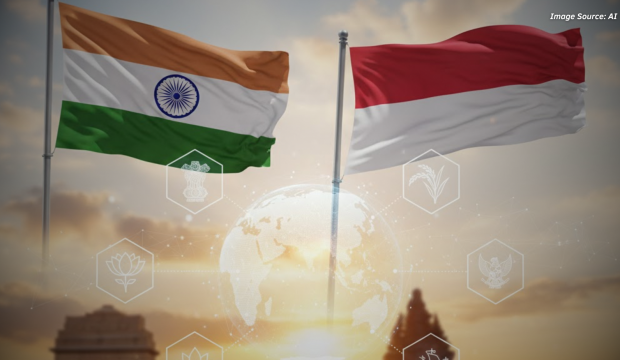Introduction
In the past, Tibet has thrived as a preserve of an antiquated civilization, living in the isolation and calm of a vast firmament, far from the commotion and upheaval of the outside world. Not for its wealth or its arsenal, Tibet was renowned for the heights of its spiritual splendour and the breadth of its intellectual philosophy. The central theme of this civilization has been religion. In Tibet’s mountain fastnesses, glens, and plateau, life persisted in its spiritual pursuit until recently, when the force of circumstances changed the way things were. Tibet has always been important in the complex relationship between China and India. Tibet is still seen as an afterthought in Sino-Indian relations despite its significance, which throws a dark shadow on bilateral relations. India has taken an overly cautious approach to Tibet and recognises Tibet as a Chinese autonomous region.
Tibet Dynamic In Indo-Sino Border Dispute
Conflicts along India’s border with China revolve on two sizeable regions, namely Ladakh and Arunachal Pradesh. China says that the latter is a part of “Southern Tibet” and the former is a part of the Aksai Chin territory which is under its administration. The history of China’s occupation of Tibet is the root cause of both of these conflicts. The most recent manifestation of these conflicts were the clashes between Indian and Chinese soldiers in the Indian Galwan valley in June 2020, which resulted in fatalities on both sides. There is information that in August 2020, one Tibetan who is part of SFF (special frontier force) lost his life in a land mine detonation during one of his patrols in the region. This August incident near the Sino-Indian border claimed the life of Tibetan warrior Nyima Tenzin, and his military burial was a contentious event.[1] Both the Tibetan “snow lion” flag which is forbidden in China, and the tricolour of India, were flown over his coffin.[2] Such events demonstrate how Tibet has been and will continue to be a crucial component of India-China ties and a key issue in the context of their border dispute. As a result, it is crucial that going forward, India develops and implements a strong and unambiguous foreign policy on its diplomatic interactions with China, with the Tibet problem at the forefront of the conversation rather than as a secondary consideration.
‘Tibet Factor’ In The Indo-Sino Border Dispute
For thousands of years, Tibet acted as a physical barrier to keep China and India apart and at peace. Since China attacked and controlled Tibet in 1950, India and China have just recently started to share a border, and with it the inherent issues of border security, such as the delineation and demarcation of the boundary and the movement of people and flow of trade across it.[3]
The new border law consists of seven chapters and 62 articles. All of China’s land borders must have boundary markers installed by law in order to properly indicate the border. By the way, India is not the only country affected by the new border laws. India is one of China’s 14 international neighbours along its 22,457-kilometer land border, which ranks third in length behind Mongolia and Russia. The law also mandates that the state take action to improve public services and infrastructure, strengthen border defence, support economic and social development, open up border regions, and encourage and support people’s lives and employment. It also calls for the coordination of border defence and social and economic development.[4]
Without a doubt, the new border restrictions would have an impact on India.These guidelines come into force as India continues to seek a peaceful resolution to its longstanding dispute with the PRC. The first issue with this legislation is that it forbids the construction of any long-term infrastructure near the border without China’s consent. Building activity has grown in recent years in both China and India, with both nations building roads, bridges and military housing at a dizzying pace. The Barahoti Plains in Uttarakhand, the whole state of Arunachal Pradesh, and portions of Ladakh up to the 1959 Claim Line are also included on China’s new map. Additionally, the new legislation specifies that China would have total control over its internal waterways, regardless of the interests of its neighbouring governments.[5]
Tibet-India relationship: A historical context
China and Tibet have historically engaged in conflict. Taking control of Tibet was among the communist leaders of China’s top goals. Tibet was crucially significant to China from a strategic and security standpoint. It acted as a buffer zone between British India and China historically. Tibet is China’s unsecure backdoor, which has never been fully closed. Early in the 20th century, when China was struggling and the Manchu dynasty was disintegrating, the British established themselves in Tibet. China believed that Nehru’s independent India was carrying on the British government’s policy towards Tibet.
At the time, Tibet was a mostly independent, isolated province, but because of its location between British-ruled India and China’s Qing Dynasty, it was strategically significant. A military and diplomatic mission by the British Empire in 1903–1904 known as the Younghusband Expedition or Younghusband Mission sought to establish British dominance in Tibet.[6] Colonel Francis Younghusband, a British military commander and explorer, was in charge of the mission. He was given the responsibility by the British government of negotiating trade and boundary agreements with Tibet and, if necessary, resorting to force to further their goals. In December 1903, the expedition entered Tibet and ran into opposition from Tibetan soldiers. The 13th Dalai Lama escaped to Mongolia when the British arrived in Lhasa, the capital of Tibet, in August 1904.[7] Younghusband mediated the Treaty of Lhasa while the British controlled Lhasa. This agreement, which was signed in September 1904, established British suzerainty over Tibet, obliging Tibet to coordinate its foreign policy with that of the United Kingdom. Tibet also consented to provide Britain a sizable indemnity. The Younghusband Expedition was a pivotal event in the history of Tibet because it placed Tibet under British rule. Additionally, because it was perceived as a challenge to Chinese control over Tibet, it had repercussions for the geopolitical equilibrium in the area.
China was well aware that if Tibet remained ungoverned, it would ultimately come closer to India, with which it shared a border, a strong religious and cultural bond, and no hostilities in the past. In fact, India and Tibet have long had a very active two-way exchange of religious and cultural ideas. India, the country where Buddhism took birth, is viewed by Tibetans as both their spiritual teacher and as Aryabhumi, or “the Land of the Holy.”[8] Similar to how Mount Kailash and Lake Mansarovar in Tibet are recognised as Lord Shiva’s residence in Hindu myth and tradition, they are also considered to be the holiest peak and lake in those religions. In India’s upper Himalayan mountains, the Tibetan school of Mahayana Buddhism is the dominant school of thought. In India, the Dalai Lama is very well-liked. In actuality, India has traditionally provided a haven for Tibetans; fifty years prior to the current Dalai Lama’s escape to India in 1959, his forerunner, the thirteenth Dalai Lama, had fled to British India for safety when the Chinese army arrived in Lhasa in 1910.[9]
Chinese Denial Of Boundaries, Aggression And Infrastructure Development In Tibet
Since the majority of India’s borders and the 3500 km Ladakh Autonomous Region (LAC) are within the Tibetan Autonomous Region and not the rest of China, Tibet has long been considered India’s true neighbour. Tibetan delegates signed the Simla convention with British India in 1914, together with Chinese representatives, to define boundaries.[10] However, China rejected the agreement and the McMahon line that separated the two nations once it fully annexed Tibet in 1950. Additionally, India and China agreed to recognise Tibet as the “Tibet region of China” in a 1954 accord. The Dalai Lama, the spiritual head of the Tibetan people, and many of his supporters fled to India in 1959 after the Tibetan uprising. He and other Tibetan exiles were given sanctuary by the late Prime Minister Jawahar Lal Nehru, who also assisted in establishing the Tibetan government in exile (Central Tibetan Administration). According to official Indian policy, the Dalai Lama is a spiritual leader, and the more than a lakhTibetan exiles living in India are not permitted to engage in any political activities.
China began to firmly establish its grasp on Tibet in 1950, when it seized control of Tibet. In order to do this, it was essential to build more stable transit ties with Tibet. Highways linking Tibet to other regions of China were completed by 1954. Furthermore, Chinese believed that the arid and unpopulated Aksai Chin region offered a relatively straightforward route from Xinjiang to Tibet.[11] The Chinese administration utilised dilatory tactics in the border issue to lull India into complacency because Aksai Chin was controlled and claimed by India. It simultaneously took steps to strengthen its presence on the ground and created plans to construct a route that would connect Xinjiang with Tibet over Aksai Chin.[12]
The Chinese imposed the Seventeen-Point Agreement on us in May 1951. The Indian government granted administrative power over the remote and sparsely populated Himalayan regions of Ladakh and the North-East Frontier Agency (NEFA), commonly known as Tawang. Arunachal Pradesh is the new name for NEFA. After it had subdued the Dalai Lama and begun road-building projects to improve connectivity with Tibet, China concentrated on weakening Tibet’s traditional economic ties with India and Nepal, eliminating India’s extraterritorial rights in Tibet, and securing India’s legitimacy for China’s occupation of Tibet.[13]
In September 1957, construction of the Aksai Chin route, which links Tibet and Xinjiang, was complete. India was naturally on watch and anxious, but it didn’t express its dissatisfaction until the next year.[14] But China’s attitude got more antagonistic. Through Zhou Enlai, the Dalai Lama had invited Nehru to travel to Tibet in January 1958, but the Chinese began to postpone the trip. Significant areas of the NEFA were claimed by China on printed maps, and there were more instances of Chinese soldiers transgressing the Indian-controlled territory. It is obvious that the Sino-Indian relationship has become worse.
It was obvious that China had occupied parts of Aksai Chin that India also claimed or controlled as a result of the actions it was taking to tighten its authority over Tibet. Naturally, this infuriated India. China, on the other hand, took offence at India’s participation in US initiatives as well as its own backing for the Tibetan resistance movement in India. Large-scale riots occurred in Kham and Amdo during the attempt by the government to impose collectivization, which resulted in the destruction of several monasteries and the execution of monks. Numerous refugees also fled to India as hundreds of them poured into central Tibet. The Dalai Lama fled to India in March 1959 as a result of the rapidly worsening situation in Tibet.[15]
India’s Shifting Position On Tibet
Various moves by India show that its position on Tibet is shifting. The leader of the Tibetan government in exile was invited to the swearing-in event in 2014, thanks in part to the Indian government’s management of public forums including the Dalai Lama. On His Holiness’ 88th birthday, on July 6, Prime Minister Narendra Modi personally sent birthday greetings, continuing a practice that began in 2014. Additionally, India sponsored the first worldwide conference on Buddhism this year, which was opened by the Indian Prime Minister and attended by high-ranking Indian officials. In addition, India changed its position following the conflict in the Galwan Valley by officially endorsing the Tibetan Special Frontier Force. However, India must express its commitment by officially acknowledging the Central Tibetan Administration.[16]
Conclusion
Currently, the majority of Tibetans support the Middle Way strategy because they view it as His Holiness the Dalai Lama’s (HHDL) well-considered choice. Tibet’s goals are the conservation and preservation of Tibetan culture, area, and national identity, not true independence from China. In exchange, security and territorial integrity would be guaranteed for the Chinese. The world has endorsed this strategy. The governments of China and India often downplay the Tibet element in the context of the India-China border conflict because they want to pursue a peaceful and productive relationship. Tibetans greatly appreciate the Indian government’s efforts to treat them with the respect they deserve and for providing them a forum to voice their concerns.
References
Died in Landmine Blast While Patrolling, Special Frontier Force’S Tibetan Commando Laid to Rest. (2020, September 7). The Indian Express. Retrieved September 22, 2023, from https://indianexpress.com/article/india/died-in-landmine-blast-while-patrolling-special-frontier-forces-tibetan-commando-laid-to-rest-6587010/
Died in Landmine Blast While Patrolling, Special Frontier Force’S Tibetan Commando Laid to Rest. (2020, September 7). The Indian Express. Retrieved September 22, 2023, from https://indianexpress.com/article/india/died-in-landmine-blast-while-patrolling-special-frontier-forces-tibetan-commando-laid-to-rest-6587010/
- Walyat, S. (2023, July 9). Tibet: India’s Forgotten Neighbour. https://www.outlookindia.com/. Retrieved September 22, 2023, from https://www.outlookindia.com/national/tibet-india-s-forgotten-neighbour-news-301445
- Team, W. W. (2022, January 3). What is Chinas new land border law and its impact on military standoff with India? WION. https://www.wionews.com/india-news/what-is-chinas-new-land-border-law-and-its-impact-on-military-standoff-with-india-441918
- Team, W. W. (2022, January 3). What is Chinas new land border law and its impact on military standoff with India? WION. https://www.wionews.com/india-news/what-is-chinas-new-land-border-law-and-its-impact-on-military-standoff-with-india-441918
- https://testbook.com/question-answer/the-younghushand-mission-to-tibet-was-sent-by-whic–60741ed3abf07a4574ce6d40#:~:text=Lord%20Curzon%20sent%20Younghusband%20mission,India%20from%201899%20to%201905.
- Batbayar, T. (2016, May 22). Dalai Lama 13th and Mongolia. mas-mn. Retrieved September 30, 2023, from https://www.academia.edu/25524230/Dalai_Lama_13th_and_Mongolia
- India’s Tibet policy an appraisal and options https://tibet.net/wp-content/uploads/2017/05/Inidas-Tibet-Policy.pdf
- India’s Tibet policy an appraisal and options https://tibet.net/wp-content/uploads/2017/05/Inidas-Tibet-Policy.pdf
- Walyat, S. (2023, July 9). Tibet: India’s Forgotten Neighbour. https://www.outlookindia.com/. Retrieved September 22, 2023, from https://www.outlookindia.com/national/tibet-india-s-forgotten-neighbour-news-301445
- India’s Tibet policy an appraisal and options https://tibet.net/wp-content/uploads/2017/05/Inidas-Tibet-Policy.pdf
- India’s Tibet policy an appraisal and options https://tibet.net/wp-content/uploads/2017/05/Inidas-Tibet-Policy.pdf
- India’s Tibet policy an appraisal and options https://tibet.net/wp-content/uploads/2017/05/Inidas-Tibet-Policy.pdf
India’s Tibet policy an appraisal and options https://tibet.net/wp-content/uploads/2017/05/Inidas-Tibet-Policy.pdf
India’s Tibet policy an appraisal and options https://tibet.net/wp-content/uploads/2017/05/Inidas-Tibet-Policy.pdf
India’s Tibet policy an appraisal and options https://tibet.net/wp-content/uploads/2017/05/Inidas-Tibet-Policy.pdf














































